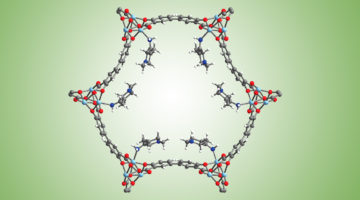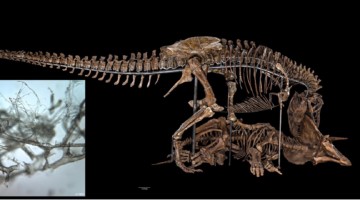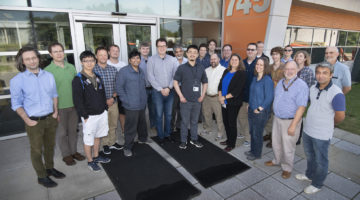Scientists at Berkeley Lab have made a surprising discovery that could help explain our risk for developing chronic diseases or cancers as we get older, and how our food decomposes over time. The findings point to an unexpected link between the ozone chemistry in our atmosphere and our cells’ hardwired ability to ward off disease. Read more »
Highly Permeable Perfluorinated Sulfonic Acid Ionomers for Improved Electrochemical Devices: Insights into Structure-Property Relationships
Perfluorinated sulfonic acid ionomers (PFSAs) induce significant mass-transport limitations in proton exchange membrane fuel cell catalyst layers due to their semicrystalline PTFE-based matrix. We present a novel PFSA with an amorphous perfluorinated matrix, which vastly improves gas permeability, reduces transport resistance, and improves catalyst utilization in functional catalyst layers. Read more »
Can Minerals in the Earth’s Lower Mantle Store Water?
Earth is considered a watery planet, simply by virtue of the fact that 71% of its surface is covered by oceans. But researchers have discovered that, in the massive volume of material in Earth’s interior, minerals can serve as an important water reservoir, providing a new perspective on our planet’s water budget. Read more »
Water Improves Material’s Ability to Capture CO2
With the help of the ALS, researchers from UC Berkeley and ExxonMobil fine-tuned a material to capture CO2 in the presence of water. The parties have applied for a patent on the material, which was developed for use on the relatively humid flue gases emitted by certain natural gas power plants, a cleaner-burning alternative to coal. Read more »![]()
![]()
ALS in the News (February 2020)
-
-
- X-ray technology sheds new light on antibiotic synthesis
- Berkeley Lab helps reveal how dinosaur blood vessels can preserve through the ages
- Light sources form data solution task force
- Breaking through computational barriers to create designer proteins
- Turning up the heat on antibacterial-resistant diseases
- Researchers discover a unique orbital texture in single-layer of 3-D material
-
ALS Reveals Vulnerability in Cancer-Causing Protein
A promising anticancer drug, AMG 510, was developed by Amgen Inc. with the help of novel structural insights gained from protein structures solved at the ALS. AMG 510, which is currently in phase II clinical trials for efficacy, targets tumors caused by mutations in the KRAS protein, one of the most common causes of cancer. Read more »![]()
![]()
Probing the Evolution of Photovoltaic Films during the Spin-Coating Process
A new, in-beamline spin-coating platform enabled researchers to probe the structure of a promising photovoltaic material in the crucial early stages of processing. The results demonstrate the power of multimodal in situ techniques as promising tools for optimizing synthesis parameters and, thus, device performance. Read more »
Berkeley Lab Helps Reveal How Dinosaur Blood Vessels Can Preserve Through the Ages
A team of scientists used infrared and x-ray imaging performed at the Advanced Light Source to determine the chemical mechanisms that allow soft tissue structures to persist in dinosaur bones—countering the long-standing scientific dogma that protein-based body parts can’t survive more than 1 million years. Read more »
X-Ray Technology Sheds New Light on Antibiotic Synthesis
Atomic-scale structural analyses performed at the ALS are helping scientists understand the inner workings of the enzyme “assembly lines” that microbes use to produce an important class of compounds, many of which have uses as antibiotics, antifungals, and immunosuppressants. Read more »
Light Sources Form Data Solution Task Force
With funding from DOE for a two-year pilot program, scientists from the five light sources have formed a Data Solution Task Force that will demonstrate, build, and implement software, cyberinfrastructure, and algorithms that address universal needs between all five facilities. These needs range from real-time data analysis capabilities to data storage and archival resources. Read more »
- « Previous Page
- 1
- …
- 46
- 47
- 48
- 49
- 50
- …
- 83
- Next Page »








